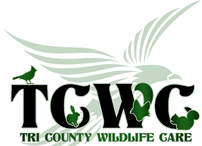June 2015 - the California Scrub Jay
|
The California Scrub Jay is our most common jay. They are loud, raucous, and beautiful blue and gray birds that seem to be everywhere.
Yes, they are loud. But that has its benefits for all the birds around. Jays will warn when the neighborhood cat comes near the feeders allowing all the birds to escape. Or they will harass the squirrels around the feeders until the squirrels depart and the birds can have breakfast in peace. Due to their love of acorns, Scrub Jays are indispensable to the dispersal of oak species in the foothills. Since they may cache thousands of acorns in a season, they are the main oak-gardeners of California. And though they love acorns, which are plentiful here in the foothills, they eat just about everything. They will come to your feeders for peanuts, suet, sunflower seeds and mealworms. Their caching of food has been much studied. You may see a jay stuff himself with peanuts from your feeder, disappear for a moment and be back again stuffing his beak. They may find food they cached over 250 days ago. Some jays will steal from other jays, and some have learned to watch who is around when they cache their food. If another bird or squirrel is watching, they will cache it further away and out of sight. They will even move it a short time later to trick who may be watching. They are also good for your garden. Do you grow your own vegetables? Scrub Jays will eat grubs that threaten your veggie plants. They will eat hairy caterpillars by rubbing off the guard hairs in the soil so they can safely eat them without irritation. They also eat spiders, beetles, wasps, termites and small rodents. We can forgive them their bullying ways and loud calls in return for this magnificent service. So, keep your feeders stocked and invite these colorful birds into your garden. |
Learn More!
|

